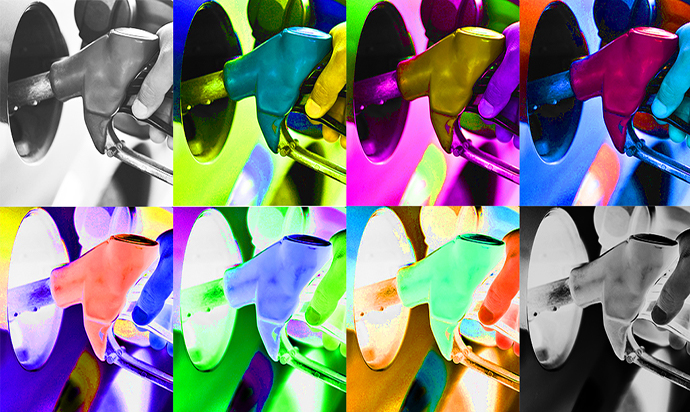Most people never see the fuel they pump into their cars. It goes through the pump, down a black hose, through a nozzle and into the darkness of the gas tank. Gasoline is naturally clear, white, or slightly amber. Diesel comes out clear or yellow. But fuels in Canada and around the world is dyed various colours to clearly distinguish it for special purposes. You’ll find it at certain gas stations, commonly cardlocks, and at some marinas.
Just keep in mind, if you mess with dyed fuel without authorization, it could have you wearing orange for two years in prison, and send your bank account into the red to the tune of $1 million in fines, as is the case in Ontario.
Red gasoline and diesel
In most provinces, red gasoline and diesel are exempt from provincial fuels tax but have limited application. It has a number of allowed uses including heating, lighting, and cooking. Industries like farming and construction use red fuels for off-road equipment, as do commercial marine vessels. Those who live north of the 51st parallel and more than 80 kilometres from a major highway or city are permitted its use in certain jurisdictions.
Purple fuels
Sometimes, red gasoline and diesel isn’t red, exactly; it’s really more of a purple. This is just another version of the variety mentioned above.
International tints
Yellow fuel
Europe distinguishes its heating oil with yellow dye.
Green fuel
Heating oil in Ireland is—you guessed it—green. For that matter, depending on the source, diesel can give off a greenish hue without any dyes.
Blue fuel
Marine fuel is dyed blue in France. In North America, there are rare reports of unaltered diesel coming out dark blue.
Black fuel
Greece uses black for its marine vessels.
Canadian Fuels Color-Symbol System
Some colour coding isn’t applied to the fuel itself, but to the labelling of fuels. This is also known as tagging.
The Canadian Fuels Association has a proprietary color coding system for tagging fuels used in distribution that helps identify different varieties: white for regular, blue for mid-grade, red for premium, and gold for the “really good stuff”. Distillates are coded brown, green, pink, or yellow. Silver denotes lubricating oil.
The spectrum
And, while we don’t recommend spilling diesel, it is known to refract the different wavelengths of the sun’s rays such that it makes a strangely beautiful rainbow.

Do Canadians really pay more for gasoline? Yes, and no
Canadian Fuels Association Blog March 2017
What’s up with the price of gasoline?
Canadian Fuels Association
Are gasoline prices lower in regulated markets? We ask an expert
Canadian Fuels Association Blog March 2017


